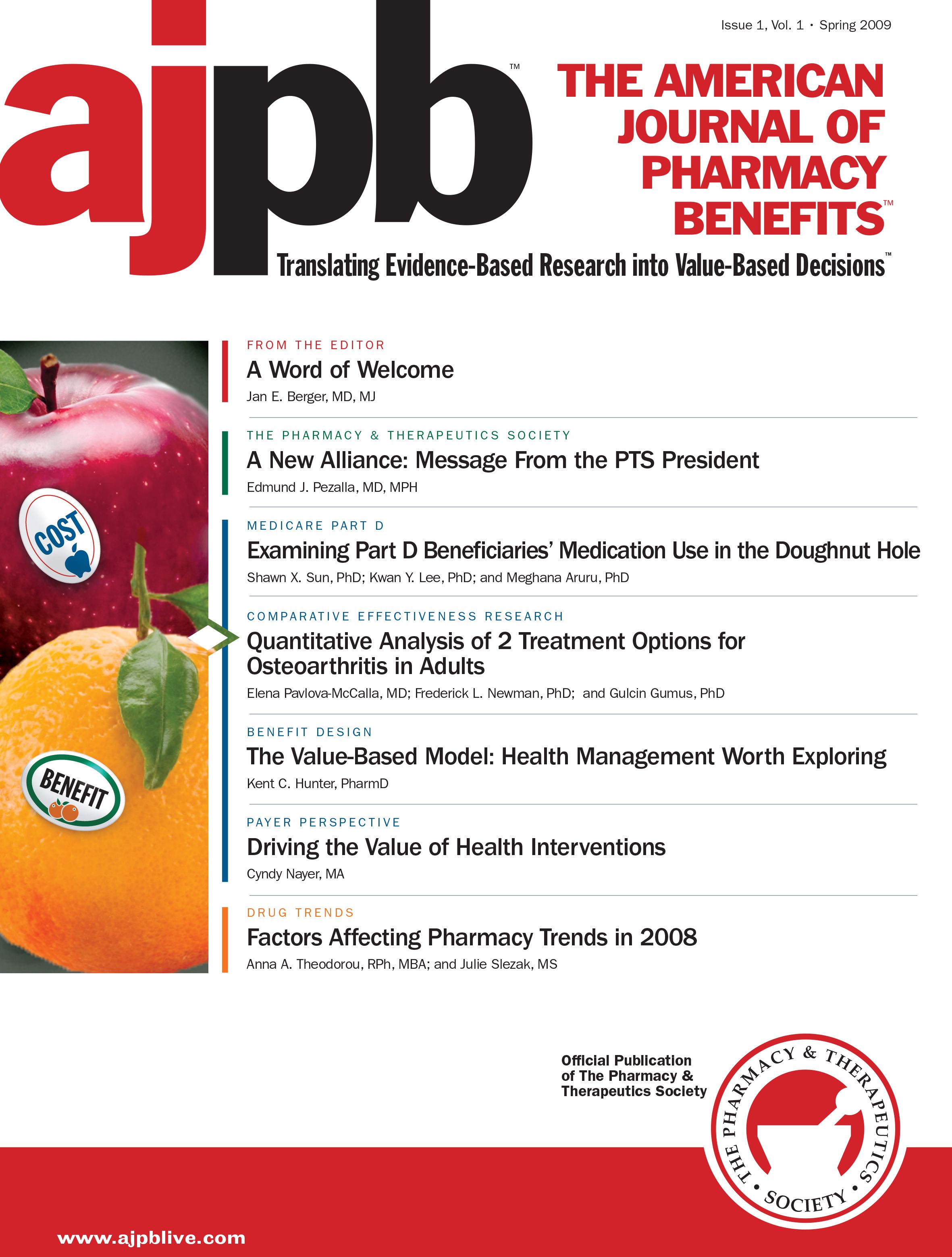Publication
Article
AJPB® Translating Evidence-Based Research Into Value-Based Decisions®
A Word of Welcome
Author(s):
In her editorial for this inaugural issue, the Editor-in-Chief lays out the philosophy and editorial scope of The American Journal of Pharmacy Benefits.
Welcome to the inaugural issue of The American Journal of Pharmacy Benefits. We are excited to bring you a peer-reviewed resource focused on the use of medications within the healthcare environment, along with models in which to fund the use of these medications. As healthcare continues to evolve, we see increasing focus on the use of pharmaceuticals. Recent studies have found that over half of the adults in the United States are taking medications for a chronic condition. Newer biotech medications are becoming available to treat cancers and other conditions that never before had treatment options. While these advances in healthcare are exciting, they raise other questions about safety, appropriate usage, and costs associated with these medications.
We have seen a signifi cant increase in postmarketing safety warnings and withdrawals of medications, with Vioxx being the most visible. One of the fi ndings associated with Vioxx was the signifi cant use of the medication, some of which was for uses outside US Food and Drug Administration labeling. The Institute of Medicine raised the issue of overuse and misuse of medications in the 1999 document, “Crossing the Quality Chasm.” When reviewing the use of medications for cancer treatment, it has been found that 77% of the medications utilized are considered “off-label.” Without passing judgment on off-label prescribing, its implications
both on healthcare as a whole and the costs associated with healthcare have to be considered.
The increased availability and utilization of medications naturally brings to bear more diffi cult questions, such as: How are these medications to be paid for within the healthcare benefi t? and Who should pay for them? When comparing our drug expenditures with the United Kingdom, France, Germany, and Japan, the United States was found to have a signifi cantly higher annual expenditure for drugs per capita than the others (Organization for Economic Co-operation and Development. OECD Health Data 2008). It is not unusual for the annual cost of a cancer drug to be $20,000, or for a person with diabetes to be on 5 chronic medications costing several thousand dollars a year. A Kaiser Foundation study found that in 2007 over half of Americans had their healthcare coverage fi nanced by employer-sponsored insurance, with another quarter through government-sponsored programs such as Medicare and Medicaid. The large majority of employer-sponsored programs included pharmacy costs either through the health plan or as a carve-out through a pharmacy benefit manager. Until the Medicare Modernization Act of 2005, many of those receiving their healthcare through Medicare did not have a pharmacy benefit, and, therefore, were paying for their own medications. Through both peer-reviewed research and other articles, The American Journal of Pharmacy Benefits will look at the
impact that payers and payment methodologies have on the pharmacy benefi t, as well as on the health and wellness of an individual and the population.
As I have shared our vision for the Journal, some have asked me if having a journal dedicated to medications and the financial payment arrangements associated with medications is contrary to the move to break down healthcare silos and to look at healthcare as a whole. I have responded by saying that the Journal is not creating a silo, but taking a focused look at the issues associated with pharmacy as the fastest growing area of the benefi t and how it integrates and affects healthcare as a whole.
We encourage you to become involved in the Journal’s active learning environment through submission of articles and responses or commentaries associated with past articles. Let’s learn together as to what works and share the benefi ts of the lessons learned from things that did not turn out as expected.
Welcome to The American Journal of Pharmacy Benefits. We are glad to have you.







